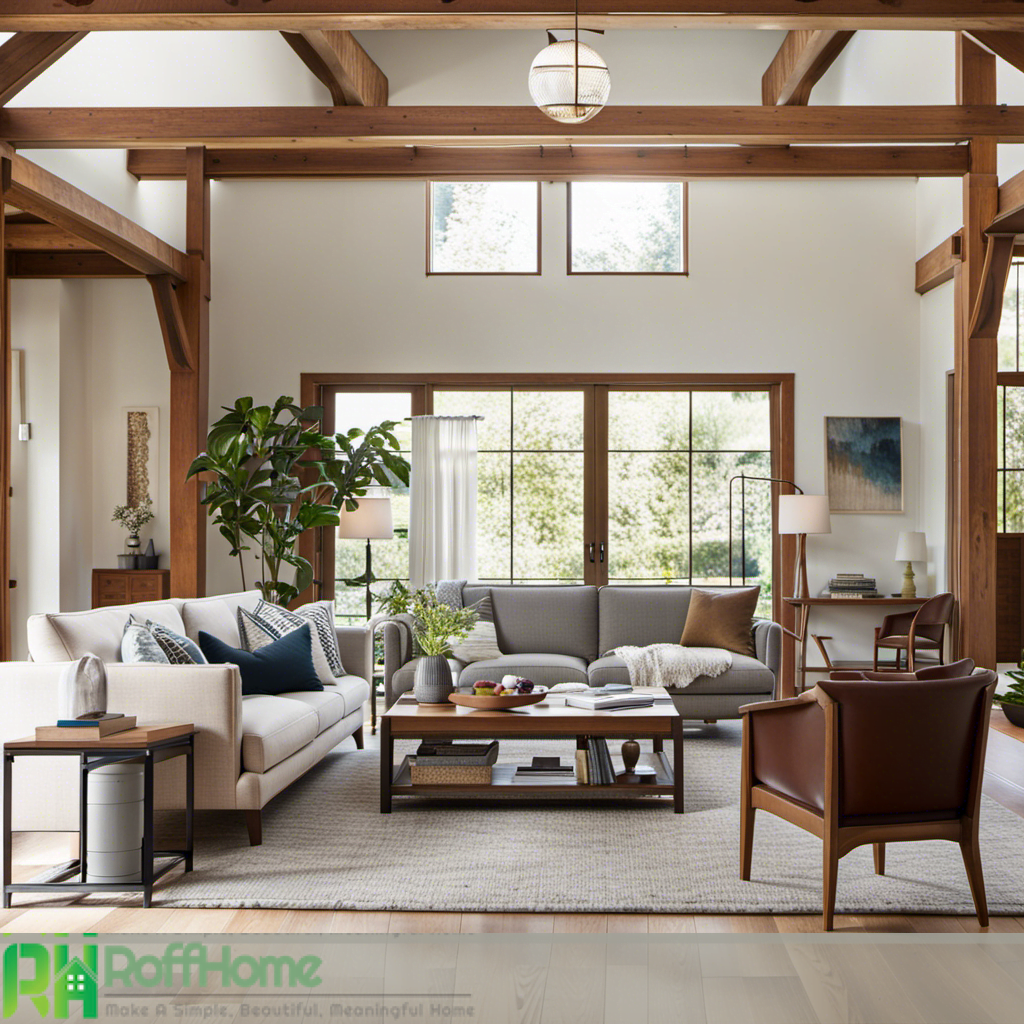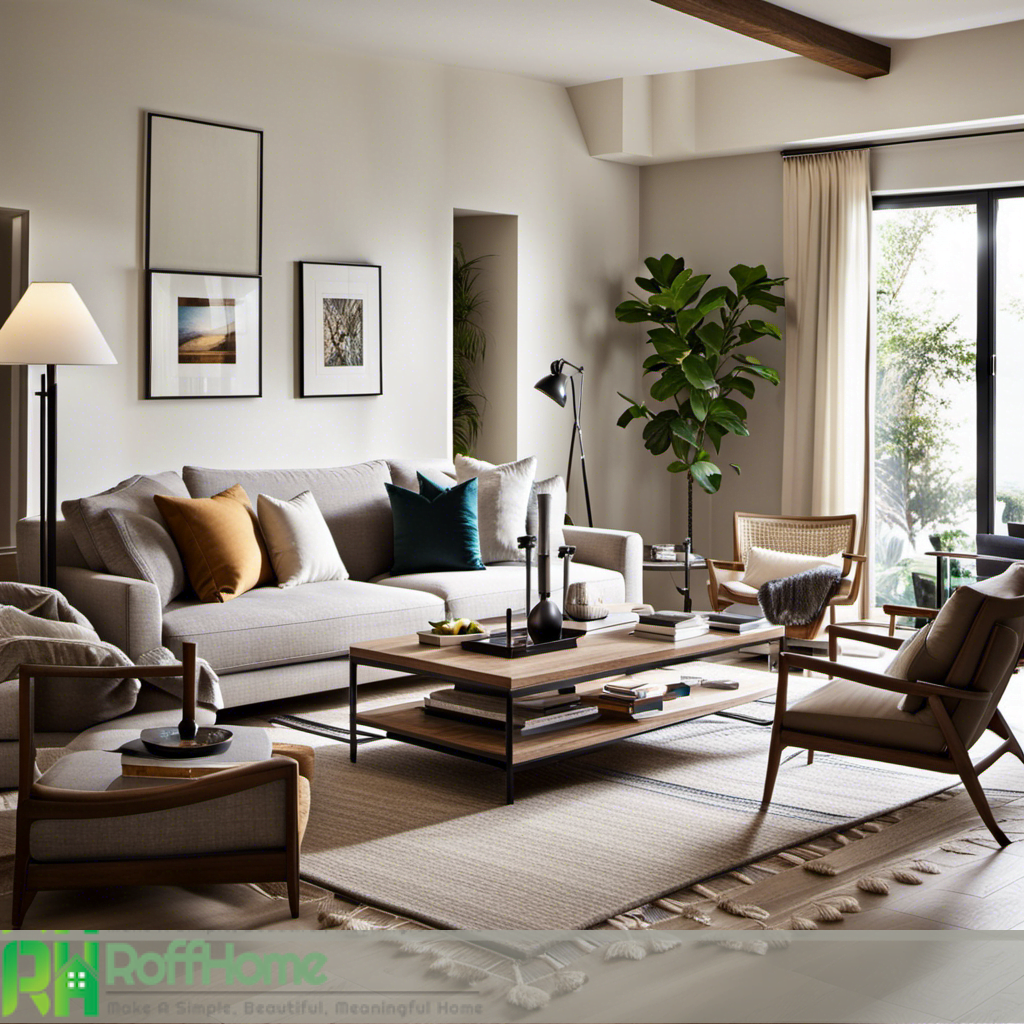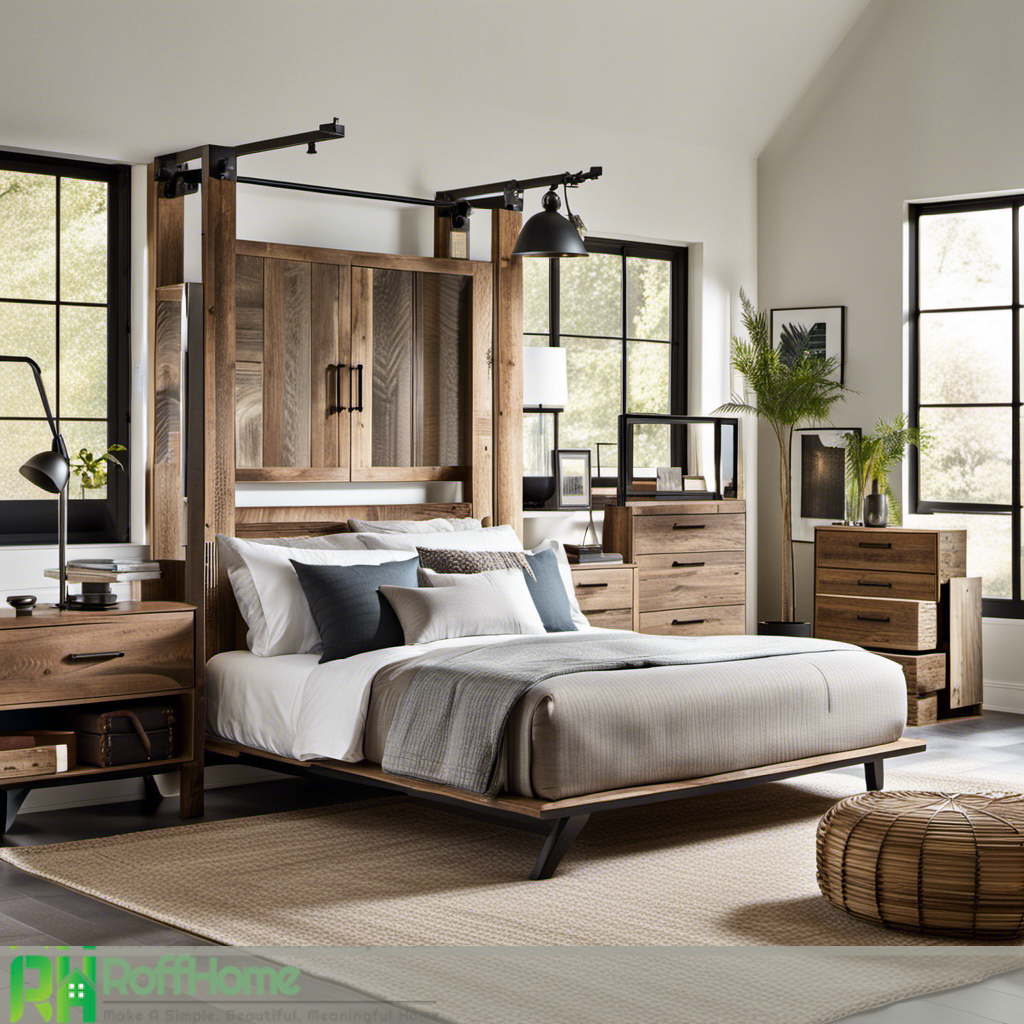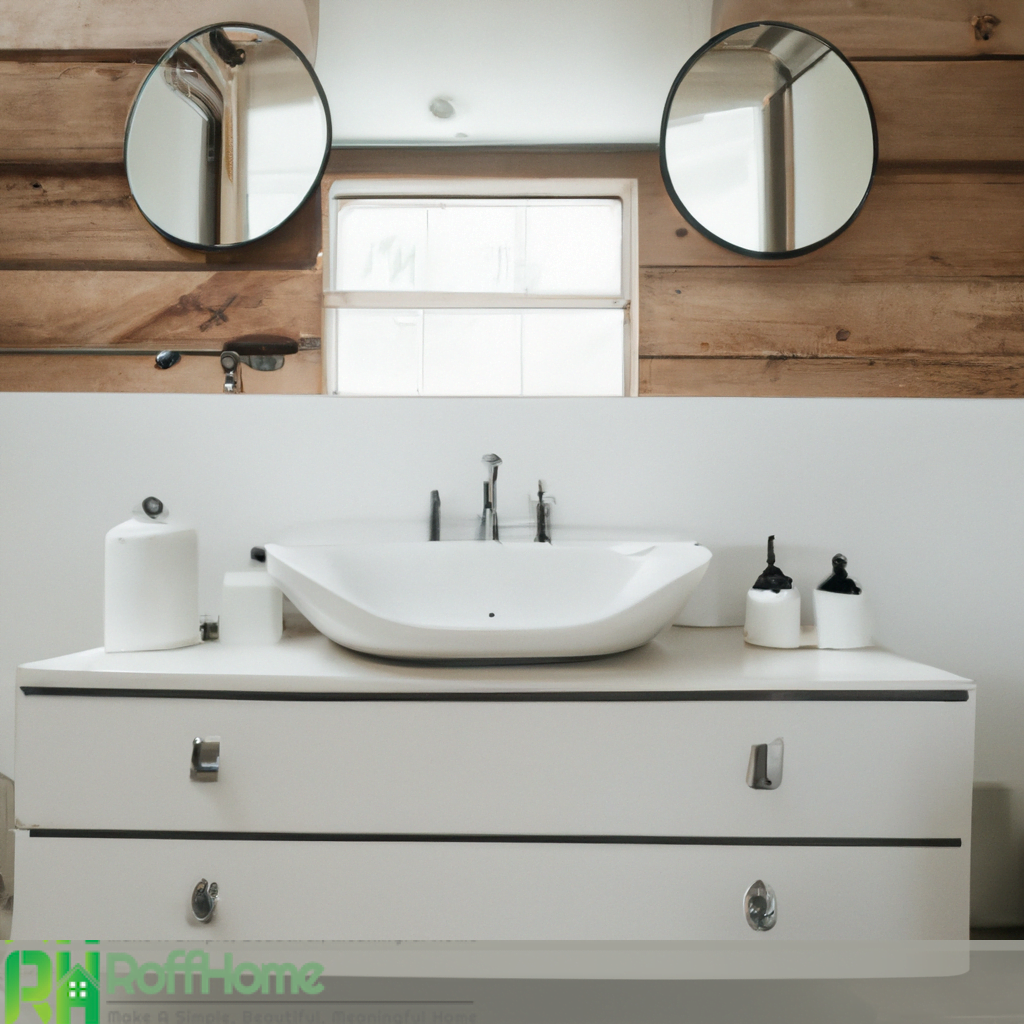Discover Transitional Style Bathrooms | Modern Elegance
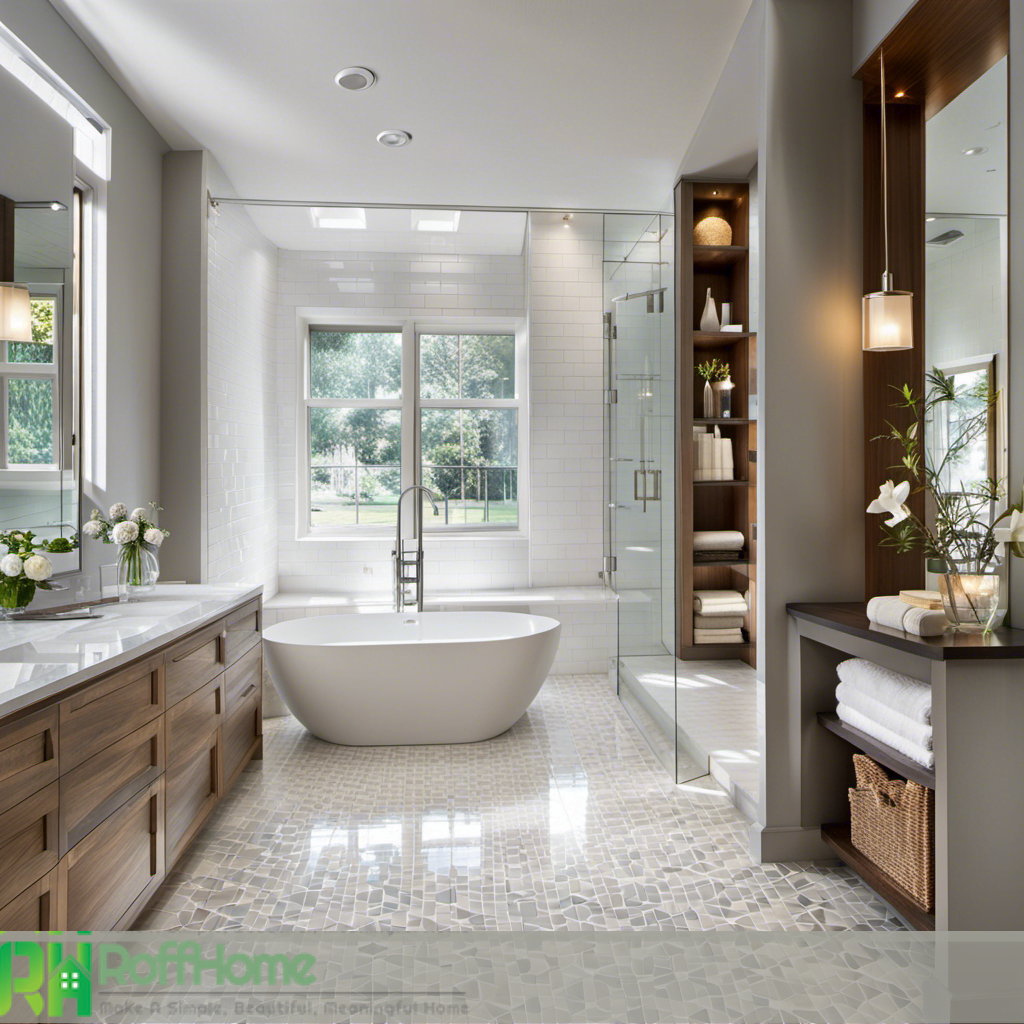
A transitional style bathroom embodies the art of harmoniously blending traditional and modern design elements to create a captivating and elegant space. This design approach offers a timeless allure while incorporating the best of both worlds, seamlessly merging classic aesthetics with contemporary convenience. With a focus on achieving balance and sophistication, a transitional style bathroom is a perfect canvas for expressing your unique taste.
The delicate interplay between traditional and modern elements lies at the heart of the transitional-style bathroom. This design concept celebrates the enduring charm of traditional fixtures, materials, and finishes while seamlessly integrating them with sleek, modern lines and cutting-edge appliances. The result is an ambiance that exudes warmth and freshness, making it a welcoming retreat for relaxation.
One of the key strengths of this design style is its ability to optimize space and layout, making it a versatile choice even for small bathrooms. Accessories, color palettes, and patterns play crucial roles in enhancing the overall aesthetic. Every detail contributes to the cohesive and balanced design that defines the transitional style, from meticulously chosen lighting to personalized touches.
Whether you embark on a DIY design journey or enlist the expertise of professionals, a transitional style bathroom promises a high-end transformation that transcends trends. It’s a testament to the art of renovation and remodeling, where each element comes together in a symphony of elegance. In this article, we delve deep into the nuances of creating a seamless transitional bathroom design, exploring the intricacies of aesthetics, layout, and the meticulous curation of fixtures and accessories embodying the essence of transitional style.
The Timeless Elegance of a Transitional Style Bathroom
A transitional bathroom encapsulates a timeless elegance that effortlessly merges traditional and modern design elements, creating a space that exudes sophistication and charm. This design concept offers a harmonious blend of classic and contemporary, creating a sanctuary that stands the test of time.
At its core, the allure of a transitional-style bathroom lies in its ability to strike a perfect balance between old-world charm and sleek modernity. Traditional elements, such as ornate fixtures and rich materials, coexist seamlessly with clean lines, minimalist decor, and innovative technology. This fusion of contrasting styles transcends passing trends, allowing the space to maintain its allure for years.
In a transitional bathroom, every detail is carefully curated to evoke a sense of refined luxury. Fixtures, such as faucets and hardware, often showcase classic silhouettes with a modern twist, while the choice of materials and finishes emphasizes both durability and aesthetic appeal. The color palette tends to be neutral, allowing for versatility in decor choices and ensuring a serene ambiance.
Thoughtfully placed sconces, pendant lights, and chandeliers add a touch of luxury while also providing functional illumination. The interplay between light and shadow accentuates the textures and design elements, contributing to the inviting atmosphere.
Space optimization is another hallmark of a transitional bathroom. The layout is carefully planned to maximize functionality without sacrificing style. This is particularly valuable in smaller bathrooms, where every inch counts. Accessories, such as mirrors, artwork, and textiles, infuse the space with personality and provide opportunities to express individual tastes.
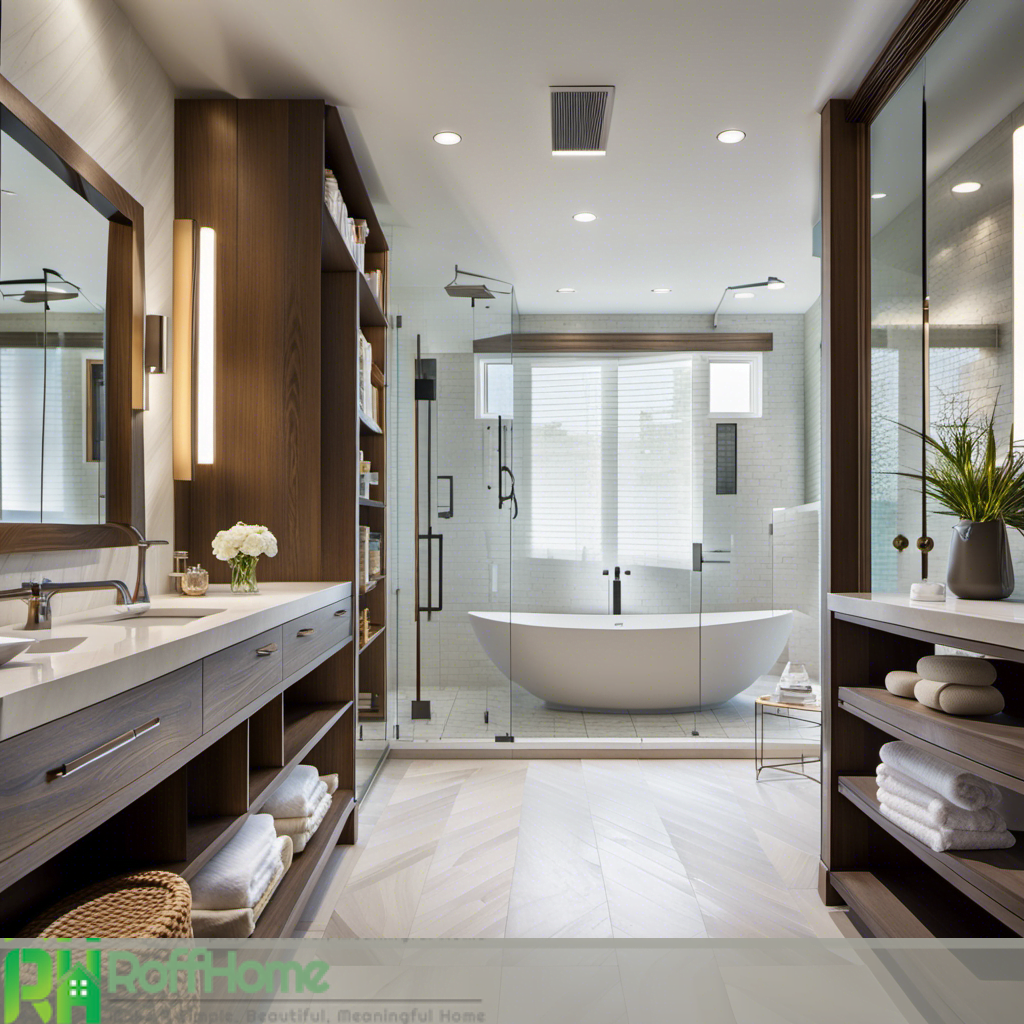
Top Materials and Finishes for Achieving a Luxurious Transitional Bathroom
Designing a luxurious transitional bathroom involves meticulous attention to detail, especially when selecting the right materials and finishes. These elements play a crucial role in defining the space’s overall aesthetic and tactile experience. By carefully blending traditional and modern elements, you can create a luxury bathroom while maintaining a balanced and inviting atmosphere.
Marble stands as an iconic material choice for a luxurious transitional bathroom. Its timeless elegance and natural veining add a touch of grandeur to surfaces such as countertops, flooring, and shower surrounds. Complementing the marble, brushed nickel, or polished chrome fixtures offers a sophisticated contrast, infusing a modern edge while embracing classic sensibilities.
For cabinetry and storage solutions, dark-stained wood or even painted options in neutral tones can provide a rich and luxurious feel. These materials offer depth and warmth, contributing to the overall ambiance of the space. Paired with sleek, modern hardware, these cabinets perfectly balance old-world charm and contemporary style.
Another key consideration is flooring, where options like porcelain or ceramic tiles can mimic the appearance of natural stone while offering durability and easy maintenance. Intricate mosaic patterns can add an artistic flair to the design, infusing the space with personality and character.
In the realm of finishes, matte and polished textures coexist harmoniously. Matte finishes create a soft and understated elegance, while polished surfaces reflect light, adding a touch of glamour. The strategic use of both finishes throughout the bathroom creates a visually dynamic and cohesive environment.
Incorporating luxurious materials and finishes into a transitional bathroom extends beyond the obvious choices. Elements like glass, mirrored surfaces, and high-quality textiles contribute to the opulent feel. Towel warmers, heated floors, and smart technology seamlessly blend modern convenience with lavish comfort.
Space Optimization and Layout Ideas for Small Transitional Bathrooms
Designing a small transitional bathroom requires a thoughtful and creative approach to space optimization and layout. While limited square footage may present challenges, it also offers an opportunity to create a functional and stylish oasis that seamlessly blends traditional and modern design elements.
One of the fundamental principles for maximizing space in a small transitional bathroom is efficient layout planning. The strategic placement of fixtures is key to ensuring that every inch is used effectively. Consider a floating vanity with open shelving to create an illusion of more space while providing storage for essentials. Pair this with a wall-mounted toilet to free up valuable floor space, creating an open and uncluttered feel.
Opt for a glass-enclosed shower to further enhance the layout instead of a traditional bathtub. A frameless glass enclosure creates a visual continuity, making the room appear larger. Alternatively, a corner shower with a neo-angle design can utilize awkward corners efficiently while maintaining a luxurious look.
Incorporating built-in storage solutions is essential in small bathrooms. Recessed wall niches or shelving units offer space for toiletries and essentials without encroaching on the room’s footprint. Consider installing a mirrored medicine cabinet to combine storage and functionality while reflecting light to expand the space visually.
Color palettes and materials also play a pivotal role in optimizing a small transitional bathroom. Light, neutral tones create an airy and open ambiance. Subway tiles with light grout contribute to a timeless design and visually elongate the walls. The juxtaposition of textures, such as matte tiles with glossy accents, adds depth without overwhelming the space.
Adequate lighting is vital in a small bathroom. Incorporate a combination of ambient, task, and accent lighting to eliminate shadows and create a welcoming atmosphere. Wall-mounted sconces, pendant lights, and even a strategically placed mirror with integrated lighting can enhance the overall design while providing functional illumination.
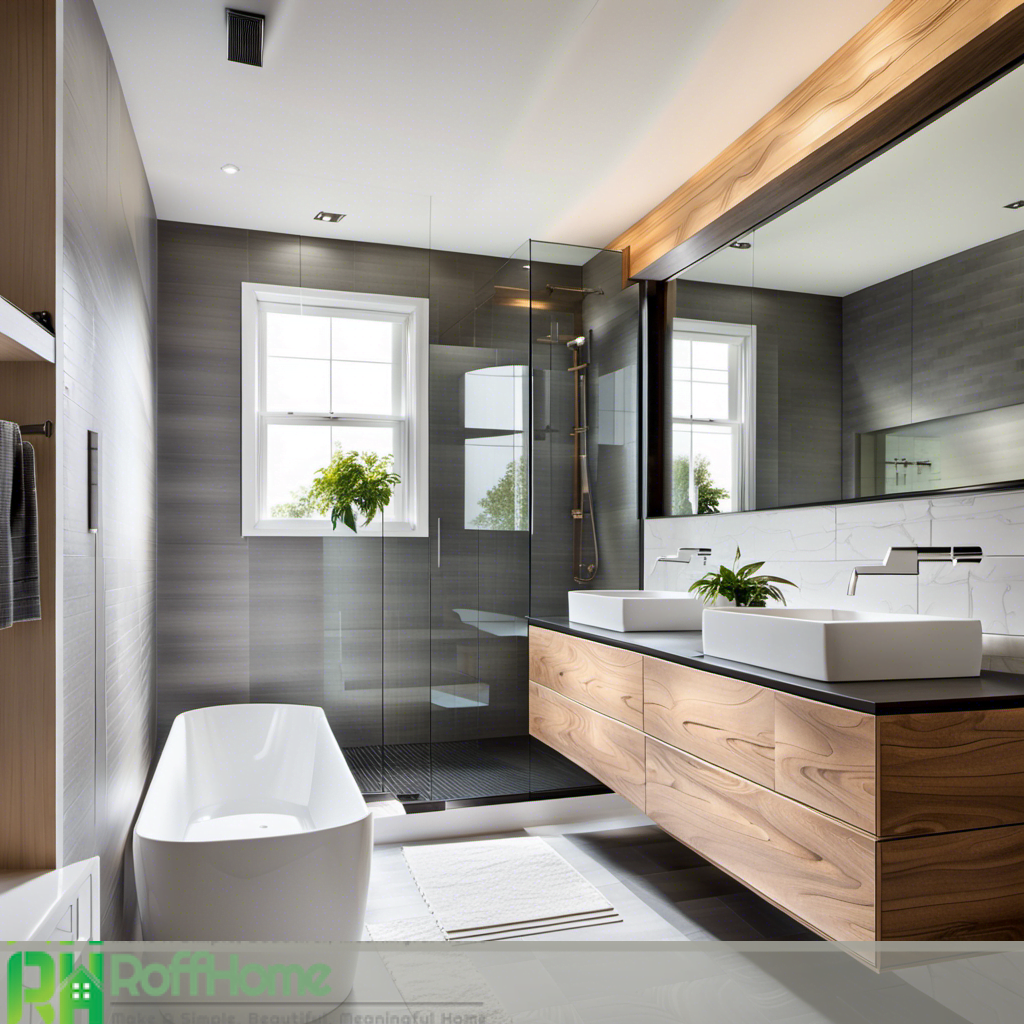
Blending Tradition and Modernity: Design Principles for Transitional Style Bathrooms
Creating a transitional style bathroom that seamlessly merges tradition and modernity is a design endeavor that requires a delicate balance and a deep understanding of both aesthetics. This harmonious fusion results in a space that exudes timeless elegance while embracing the conveniences of contemporary living.
At the core of designing a transitional-style bathroom is the art of juxtaposition. Traditional design elements, such as ornate fixtures, classic materials, and intricate details, are thoughtfully combined with clean lines, minimalist forms, and innovative technology. The marriage of these seemingly contrasting elements creates a captivating visual dialogue, allowing each feature to shine while contributing to a cohesive whole.
The color palette and materials selection play pivotal roles in achieving this balance. A neutral color scheme forms the foundation, providing a versatile canvas for traditional and modern accents. Natural stone, such as marble or travertine, establishes a sense of timeless luxury, while sleek porcelain tiles or glass surfaces introduce a contemporary edge. These materials coexist harmoniously, enhancing the tactile and visual experience of the space.
Fixtures and hardware act as bridge elements between tradition and modernity. Faucets, showerheads, and cabinet handles are chosen with a careful eye, combining classic shapes with modern finishes like brushed nickel or polished chrome. This blending of styles ensures a seamless transition between the past and the present.
Layout and space optimization are also vital aspects of transitional design. Thoughtful arrangement of fixtures creates a functional flow, even in compact bathrooms. Freestanding tubs with clean lines can take center stage, evoking a sense of luxury, while open shelving or built-in storage solutions maintain a clutter-free environment.
Lighting is a unifying element, enhancing the ambiance while accentuating design features. Pendant lights with classic silhouettes can coexist with recessed LED lighting, balancing warmth and efficiency. This interplay of light sources contributes to the inviting atmosphere of a transitional-style bathroom.
Creating a Relaxing Retreat: Essential Elements of a Transitional Style Bathroom
Designing a transitional-style bathroom goes beyond aesthetics; crafting a relaxing retreat harmoniously merges traditional charm and modern comfort. This unique design approach creates a sanctuary where you can unwind and rejuvenate, surrounded by a thoughtful balance of elements that evoke a sense of timelessness and tranquility.
Central to the concept of a relaxing transitional bathroom is integrating natural materials. Incorporate rich wood accents, such as a vanity or shelving, to infuse warmth and texture. Pair these with stone surfaces like marble or granite to add a touch of luxury, elevating the ambiance to one of opulence and serenity.
Fixtures and hardware should reflect the seamless blend of tradition and modernity. A standalone clawfoot bathtub can become a focal point, inviting you to indulge in luxurious soaks. Modern fixtures, such as waterfall faucets or rain showerheads, introduce a contemporary twist while providing a soothing and refreshing experience.
Color palettes in a relaxing transitional bathroom often lean towards soft neutrals, creating a calming backdrop. Earthy tones like beige, gray, and muted blues promote a sense of tranquility, while pops of color in accessories or artwork add visual interest without overwhelming the space.
Lighting is a vital component in cultivating a serene atmosphere. Natural light is embraced through strategically placed windows or skylights, while artificial lighting is layered to accommodate different moods. Dimmable sconces, pendant lights, and even under-cabinet lighting contribute to a relaxing ambiance that adapts to your needs.
Embracing nature is another essential element. Incorporate greenery through potted plants or even a small indoor garden. Natural elements, such as pebble flooring or a stone accent wall, further connect the space to the outdoors, enhancing the overall tranquility.
Utilize built-in niches or floating shelves to keep essentials within reach yet neatly organized. A well-designed storage system ensures that your retreat remains uncluttered and conducive to relaxation.
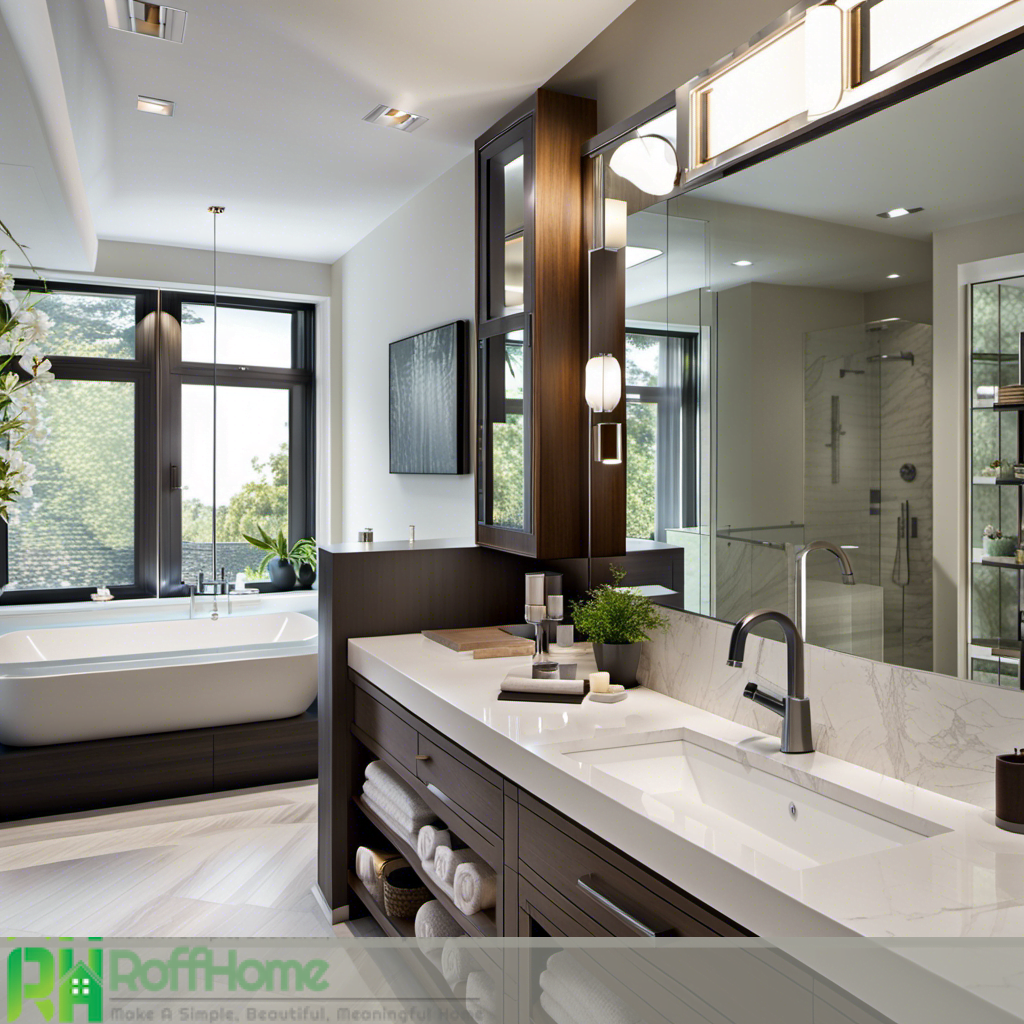
Budget-Friendly Tips for Achieving a Luxurious Transitional Bathroom Look
Designing a luxurious transitional bathroom doesn’t have to break the bank. With strategic choices and creative solutions, you can achieve an abundant and harmonious space that embodies the essence of this style, even on a budget. Here are some budget-friendly tips to help you attain a lavish transitional bathroom look without compromising elegance.
Strategic Material Selection: Opt for cost-effective alternatives that mimic the appearance of high-end materials. Porcelain tiles that resemble marble or wood can create a luxurious atmosphere without the hefty price tag. Consider using these tiles for flooring, shower walls, or backsplashes.
DIY Updates: Take on do-it-yourself projects to transform your bathroom. Repainting cabinetry, refinishing fixtures, or updating hardware can breathe new life into the space without a complete overhaul.
Accessorize Thoughtfully: Introduce stylish accessories that elevate the overall aesthetic. Chic mirrors, decorative trays, and elegant soap dispensers add sophistication without major expenses. Look for discounted or secondhand options to save even more.
Accent Lighting: Install affordable yet stylish lighting fixtures that enhance the ambiance. Pendant lights, wall sconces, or even a statement chandelier can provide a touch of luxury without a hefty investment.
Repurpose and Upcycle: Embrace the charm of upcycling by repurposing furniture or items from other parts of your home. A vintage dresser can serve as a unique vanity, and salvaged wood can be transformed into open shelves or decorative accents.
Refinish or Reglaze: If your existing bathtub or shower is outdated, consider refinishing or reglazing instead of replacing it. This cost-effective option can give these fixtures a fresh and modern appearance.
Thrift and Secondhand Find: Browse thrift stores, consignment shops, or online marketplaces for gently used or vintage fixtures, furniture, and accessories. You can incorporate these items into your design with a little creativity and save significantly.
Focus on Details: Pay attention to small details that make a big impact. Switching out old faucets and cabinet hardware with modern alternatives can instantly refresh the space and lend a more luxurious feel.
Paint and Color: A fresh coat of paint is one of the most affordable ways to the transform a room. Choose a sophisticated color palette that complements the transitional style, creating an elegant backdrop for the entire space.
Minimalism with Impact: Embrace a minimalist approach, focusing on a few impactful design elements rather than overloading the space. A statement mirror, a well-chosen artwork, or a unique light fixture can serve as the focal point and lend a sense of luxury.
The Timeless Allure of Transitional Style Bathrooms: A Comprehensive Guide
Transitional style bathrooms are a testament to the harmonious marriage of classic and contemporary design elements, creating spaces that exude a timeless allure. This comprehensive guide delves into intricacies of designing and decorating transitional bathrooms, exploring every facet of this unique and captivating style.
Defining Transitional Style Bathrooms: Understand the core principles that define transitional style bathrooms. Explore how this design approach seamlessly blends traditional and modern aesthetics to create a cohesive and visually striking environment.
Key Design Elements: Delve into the fundamental design elements that shape transitional bathrooms. Learn how to strike delicate balance between old-world charm and modern elegance, from fixtures and materials to color palettes and lighting.
Creating a Transitional Ambiance: Discover how to curate an ambiance that evokes comfort and sophistication. Explore the role of textures, accessories, and even scents in creating a serene and inviting atmosphere.
Layout and Space Optimization: Learn innovative strategies for optimizing space in small and larger transitional bathrooms. Explore layout ideas that maximize functionality while maintaining a seamless and visually appealing design.
Materials and Finishes: Dive into the world of materials and finishes that contribute to the luxurious aura of transitional bathrooms. Explore options that range from marble and porcelain tiles to hardware and fixtures that bridge the gap between tradition and modernity.
Lighting and Ambiance: Uncover the transformative power of lighting in setting the mood for a transitional bathroom. Learn how to layer different light sources to enhance the aesthetics and functionality of the space.
Personalization and Accessories: Discover the art of infusing personal touches into your transitional bathroom. Explore how accessories, artwork, and even textiles can express your style while maintaining the overarching design theme.
Budget-Friendly Tips: Explore cost-effective strategies for achieving a luxurious transitional bathroom look without breaking the bank. From repurposing to smart shopping, learn to attain luxury on a budget.
DIY vs. Professional Design: Consider the pros and cons of tackling a transitional bathroom design project versus hiring professionals. Gain insights into when to seek expert guidance and when to embark on DIY endeavors.
Maintenance and Longevity: Learn how to maintain the beauty and functionality of your transitional bathroom over time. Discover tips for keeping fixtures, materials, and finishes pristine, ensuring that your timeless oasis stands the test of time.
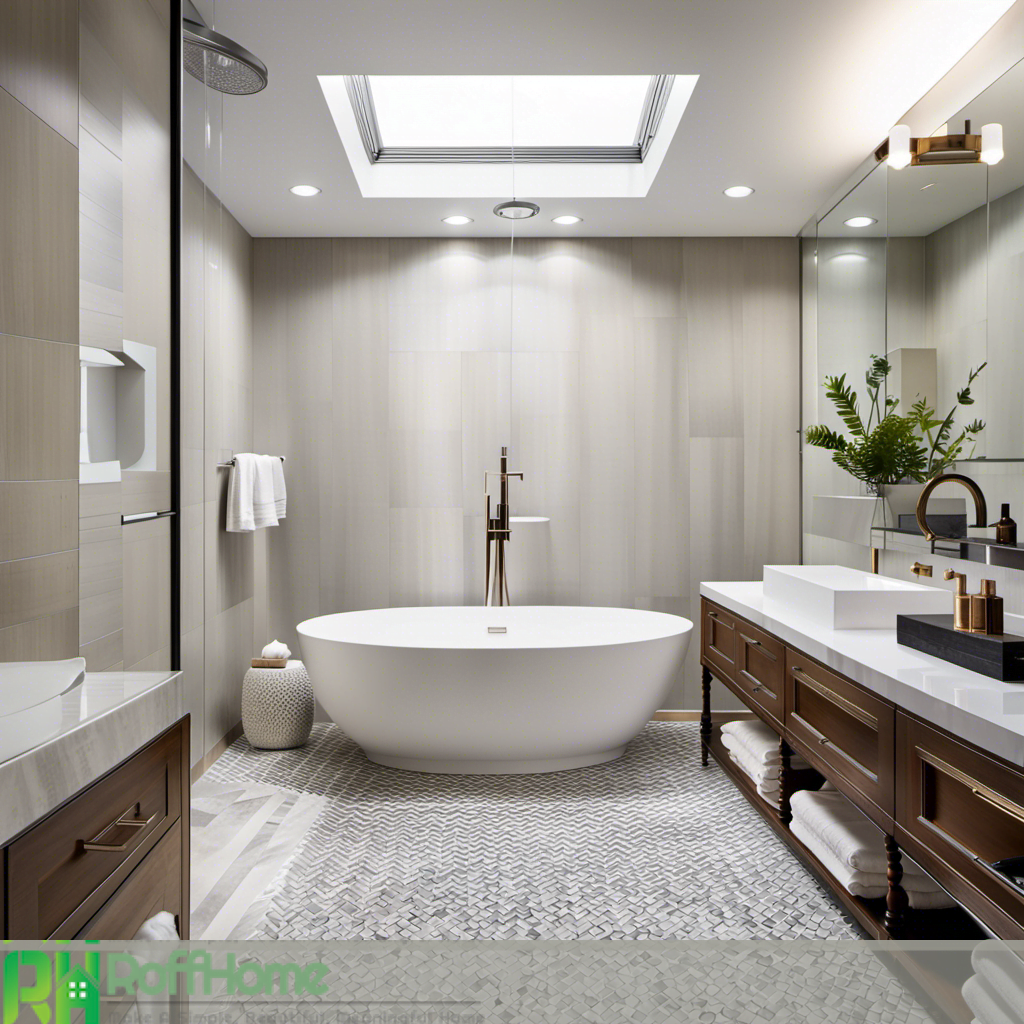
DIY vs. Professional Design: Navigating the Journey to Dream Transitional Bathroom
Embarking on journey to create your dream transitional bathroom raises an important question: should you undertake the design process yourself or enlist the expertise of professionals? This exploration delves into the pros and cons of DIY design versus hiring professionals, helping you make an informed decision that aligns with your vision and goals.
DIY Design:
Taking a do-it-yourself approach to designing your transitional bathroom offers a sense of creative empowerment and potential cost savings. It allows you complete control over every design aspect, from selecting materials and fixtures to executing the layout. DIY design is ideal for those who enjoy hands-on projects and clearly envision their desired aesthetic.
Pros:
Personal Touch: DIY design enables you to infuse your unique personality into every detail, creating a space that truly reflects your style.
Cost Control: You can work within your budget, prioritizing where you allocate funds.
Learning Experience: Undertaking a DIY project can be a valuable learning opportunity, allowing you to gain new skills and knowledge.
Cons:
Time-Intensive: DIY projects can be time-consuming, particularly if you’re new to design and renovations.
Complexity: Designing a transitional bathroom involves various technical aspects that may require expertise and experience.
Risk of Mistakes: Without professional guidance, there’s a higher chance of design and construction errors that may lead to costly fixes.
Professional Design:
Enlisting the services of professional designers and contractors offers a streamlined and expertly executed design process. Professionals bring their knowledge, experience, and access
to resources to create a cohesive and polished transitional bathroom.
Pros:
Expertise: Professionals possess the skills and know-how to optimize space, select appropriate materials, and create a design that meets your functional and the aesthetic needs.
Efficiency: Professionals streamline the design process, reducing the time it takes to complete the project.
Quality Assurance: With professionals, there’s a higher likelihood of achieving a high-quality and visually stunning result.
Cons:
Cost: Hiring professionals typically involves additional expenses for design fees and labor.
Limited Control: While professionals prioritize your preferences, there might be some compromises regarding personalization.
Lighting the Way: Illuminating Transitional Style Bathroom with Elegance
In interior design, lighting plays a pivotal role in setting the mood and the ambiance of a space, and this holds especially true for transitional-style bathrooms. This exploration delves into the art of illuminating these bathrooms with elegance, highlighting the key considerations and creative strategies that enhance the beauty and functionality of the space.
The Importance of Lighting in Transitional Bathrooms: Understanding the significance of lighting is paramount. Lighting illuminates the space, accentuates design elements, enhances colors, and creates a welcoming atmosphere. In transitional bathrooms, lighting is an essential bridge between traditional charm and modern sophistication.
Layered Lighting: One of the cornerstones of effective lighting design is layering. Combining different types of lighting—ambient, task, and accent—creates depth and visual interest. Ambient lighting provides overall illumination, while the task lighting focuses on specific areas, such as vanities and mirrors. Accent lighting showcases architectural features and adds a touch of drama.
Pendant Lights and Chandeliers: Pendant lights and chandeliers are luxurious additions that can become focal points in transitional bathrooms. Whether suspended above a freestanding bathtub or gracing a vanity area, these fixtures infuse the space with elegance while delivering ample illumination.
Wall Sconces and Mirror Lighting: Wall sconces on either side of a mirror offer balanced and flattering lighting for grooming tasks. Choosing sconces with classic designs brings a touch of tradition, while contemporary finishes keep the look fresh and modern. Backlit or illuminated mirrors add a functional and stylish element, contributing to a seamless design.
Natural Light Integration: Incorporating natural light is integral to transitional bathrooms. Maximizing the use of windows, skylights, or strategically placed glass blocks allows sunlight to filter in, enhancing the visual appeal and creating a connection with the outdoors.
Smart Lighting Solutions: Embrace technology by integrating smart lighting solutions. Dimmers, motion sensors, and programmable settings offer convenience and energy efficiency. Smart lighting allows you to adapt the lighting scheme to different occasions and moods.
Harmonizing Fixtures with Design: The choice of lighting fixtures should harmonize with the overall design of the transitional bathroom. Traditional-inspired fixtures can be juxtaposed with modern elements, adding depth to the design narrative.
In conclusion, the transitional bathroom harmoniously merges classic and modern elements, creating a timeless and sophisticated ambiance. Its balanced design, blending traditional charm and contemporary functionality, offers a sanctuary of elegance. This versatile style continues to captivate, providing a captivating retreat for years.

